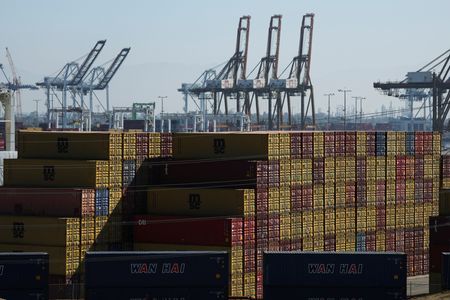LONDON (Reuters) – Kazakhstan has pumped record high oil volumes despite damage on its main export route via Russia, the Caspian Pipeline Consortium (CPC), industry sources said on Thursday.
Oil and gas condensate production in Kazakhstan was around 2.12 million barrels per day (bpd) on February 19, the sources said, citing official data, which has not been made public.
Russia said this week CPC capacity was down 30-40% after an attack by Ukrainian drones.
It was not immediately clear how Kazakhstan had been able to pump record volumes given output increases need to correspond with export pipeline capacity.
Кazakhstan relies on the Caspian pipeline for more than 80% of its exports and lacks alternative routes.
It ships more than 1% of daily global supply, stretches over 1,500 km (939 miles) and carries crude from Kazakhstan’s vast Tengiz oilfield on the northeastern shores of the Caspian Sea as well as from Russian producers.
Record high oil output in Kazakhstan in February follows a rise in production at the giant Tengiz oilfield, operated by Tengizchevroil, led by Chevron, which has embarked on a $48 billion expansion of Tengiz.
Oil output stood above 920,000 barrels per day (bpd) on February 19, up from some 900,000 bpd early in February and an average of 640,000 bpd in January.
Russian President Vladimir Putin said the drone attack damage would affect global energy markets and that restoring the facility quickly would be challenging as it would require Western equipment.
A 30-40% flow reduction would amount to some 500,000-680,000 bpd of installed capacity of CPC pipeline, Reuters calculations showed.
Kazakhstan’s energy ministry said on Tuesday the country was supplying oil without restrictions. The ministry has yet to reply to a request for comment on Kazakh oil output.
Shareholders in the CPC include U.S. majors Chevron and Exxon Mobil, as well as the Russian state, Russian firm Lukoil, and Kazakh state company KazMunayGas.
(Reporting by Reuters; editing by Barbara Lewis)








